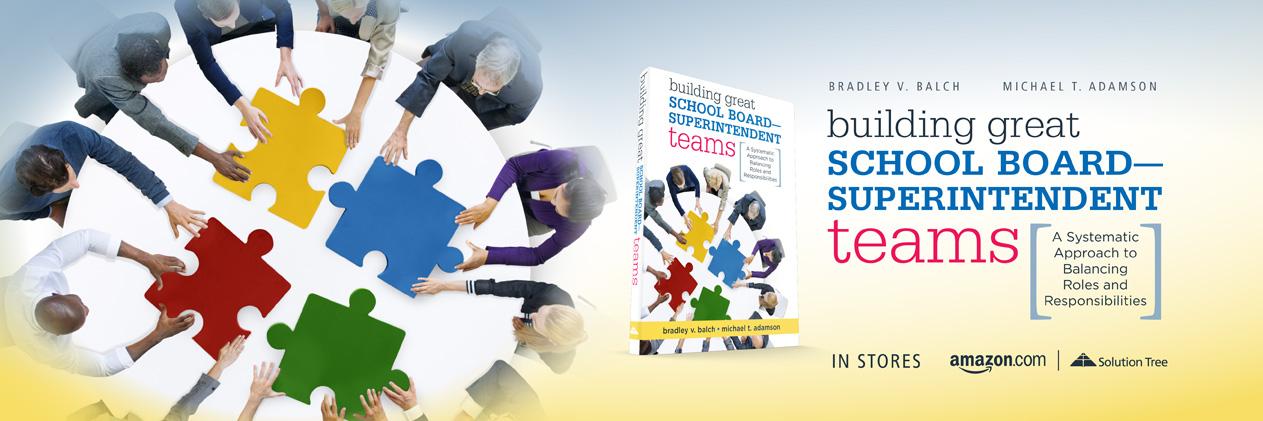This post is based on the book Building Great School Board–Superintendent Teams.
As the most basic governmental unit, the local school board–superintendent team has undergone much transformation over the last century. This transformation has significant implications for the future of this team. Consider the following change-oriented statistics:
- In 1917, there were 195,000 school districts nationwide (Kirst & Wirt, 2009) and today there are approximately 13,800 school districts (National School Boards Association, n.d.), representing a 93 percent decline.
- In the 1940s, one board member represented approximately 200 constituents, and today a board member represents 3,000 on average (Snyder, 1993). Also in the 1940s, one superintendent represented approximately 200 students and today represents 3,700 students on average (NCES, 2017).
- In 1920, public schools relied on local government for 83 percent of funds, state government for 17 percent, and 1 percent for federal aid. As of 2013, public schools relied on local government for 45 percent of funds, state government for 46 percent, and 9 percent for federal aid (NCES, 2017).
Gone are the days of the benevolent autocrat, when a superintendent could advocate for core teaching and learning needs, and local education stakeholders wholeheartedly agreed, because the superintendent was perceived as the highly trained education expert. Similarly, in the not-so-distant past, a school board could direct resources to core priorities without question from the community because board members were perceived as elected/appointed officials driven by codes of agreed-upon conduct with the highest of ethical values related to educating local youth and representing local constituents.
Today’s perceptions of board members and superintendents, unfortunately, are tainted with distrust and a lack of confidence that real problems-in-practice can be solved at the local level. It is little wonder that trust and confidence have measurably waned (Kirst & Wirt, 2009) in the past several decades, given the preceding data points. American public education is now at an all-time low number of school districts, serving far more students and compounded by far fewer local funds supporting education.
In sum, an increasing number of preK–12 students and local constituents perceive their voice to make little difference in the important educational work of teaching and learning, and an ever-growing sense of eroding local control permeates school communities. As a result, two prevailing beliefs exist.
The Two Main Challenges
- First is the belief that state, federal, and outside-expert interventions are the best means to solve challenging educational issues, not local school boards and superintendents.
- Second is the perception of eroding local control, the absence of transparency (i.e., intentional efforts, ideas, issues, policies, and decisions that are clearly communicated, readily shared, and open to feedback), and the belief that participation in local school politics in a way that influences outcomes is futile.
These two problem-based beliefs take the form of a death spiral, in which the more these beliefs are perceived to be true, the greater the levels of displeasure and trust in the team, which in turn leads to even greater perceptions of eroding local control and the need for outside intervention, leading to greater displeasure, and so on. The heartening news is that these challenges are predictable and solvable.
Challenging the Need for Outside Intervention: The Team as Systems Thinker
No one is better positioned to address tough educational challenges than the local school board–superintendent team. This team is uniquely positioned to serve as systems thinkers. Gemberling, Smith, and Villani (2002) noted, “A systems thinker understands that everything is connected to everything else” (p. 3). This 50,000-foot-view perspective also provides a strategic means of restoring trust in the team to solve problems and enhances transparency efforts as well. So where should a team begin?
Steps Toward Internal Trust and Team Building
I suggest the following next-step imperatives for restoring trust and building capacity for the team to address its own problems-in-practice:
- Establish a clear vision and mission and communicate it to your stakeholders. Once established, set measureable goals and revisit goal progress regularly in a public venue such as a board meeting or work session.
- Define board member/superintendent roles and responsibilities. Which ones are discrete, and which overlap? Overlapping roles and responsibilities serve as a cornerstone of future board and superintendent relationships (Balch & Adamson, 2018) and must be considered.
- Agree on a code of conduct/ethics and review it annually in a public meeting or work session.
- Listen to one another. Get to know each other.
- Establish ground rules for board meetings. For example, is your public comment period really a public discussion with the board-superintendent team? Another representative example might include the way in which divergent views are discussed to ensure the team speaks with one voice after a vote is taken or an issue is resolved.
- Communicate a culture of change (e.g., “We continue seeking out ways to improve teaching and learning in the district.”) on a regular basis and expect the same from your schools.
- Pursue board-development activities and evaluate yourselves regularly. Share updates as appropriate with the public.
- Place student success at the center of all things involving the team. A laserlike commitment to supporting teaching and learning issues will squarely focus on student success. The team must communicate in a variety of ways, including their actions, that student success is first and foremost a priority for the team.
The team is encouraged to approach all eight steps systematically and not just pick and choose a few. Accomplishing all eight steps lays a strong foundation for improved trust and scaffolds nicely to the next important issue: improved perceptions of local control and transparency.
The Transparent Team and Restorer of Local Control
The school board–superintendent team has faced a predictable perception of eroding local control for decades. As this happens, one representative way it often manifests itself is a perception of waning team transparency. In spite of this, public opinion continues to support more local influence and less state and federal influence (Calderon, 2014). Involving your patrons in educational decision making and other political processes enhances their political efficacy (i.e., the feeling that voting and participating can influence the school board–superintendent team), which can improve perceptions of the team (Pew Research Center, 2015) and overall efforts to be transparent.
Transparency can serve as a powerful educational unifier with the benefit of improving trust and relationships among education stakeholders. Efforts to be transparent can also strategically shift emphasis from a problem-based orientation to more solution-based perspectives. This happens because the team owns the narrative on particular issues, not the team’s critics.
First Steps Toward Transparency
The following representative steps can be important first steps in addressing improved perceptions of local control and transparency:
- Before efforts, ideas, issues, policies, and decisions can be known, the team must be knowable. Minimize your position/authoritative power and focus on relationship building. The goal of building relationships is to build trust and a sense of community.
- Share openly about educational challenges or necessary changes and also be clear about the team’s ideas, biases, values-influenced decisions, and potential solutions. Acknowledging these things serve as a means to model strength and supports a healthy culture of change. The team should also be clear and consistent about how they are addressing these issues, but remain open to other views.
- When the team makes a mistake or discovers a gap, acknowledge it. Don’t miss the opportunity to transparently acknowledge your own shortcomings as a means of demonstrating strength.
- The team should consider the role of social media. If it has a role in your communications and marketing efforts, anticipate the immediacy of social media and be prepared to start, participate, and conclude conversation in real time.
These transparency actions all serve to strengthen trust in your team’s ability to lead the district on behalf of what’s best for teaching and learning and improve perceptions of local control.
Conclusion
The school board–superintendent team has experienced a large transformation over the past several decades that dictates an assessment of what is necessary for the team to function effectively. Perceptions of eroding local control, a loss of trust and confidence in teams to tackle challenging educational issues, and a perception of a lack of transparency all fuel a transformational imperative. Is your team ready to tackle these persistent issues? The future of an effective team rests in your willingness to say “yes.”
References:
Balch, B. & Adamson, M. (2018). Building great school board–superintendent teams: a systematic approach to balancing roles and responsibilities. Bloomington, IN: Solution Tree Press.
Calderon, V. J. (2014). “Americans wary of federal influence on public schools.” Gallup News. Retrieved on October 24, 2017 from http://news.gallup.com/poll/175181/americans-wary-federal-influence-public-schools.aspx
Gemberling, K. W., Smith, C.W., & Villani, J. S. (2000). The key work of school boards guidebook. National School Boards Association, Alexandria, VA.
Kirst, M. W. & Wirt, F. M. (2009). The political dynamics of American education (4th ed.). Richmond, CA: McCutchan Publishing Corporation.
National Center for Education Statistics (2017a). “Back to school statistics.” Retrieved on October 19, 2017 from https://nces.ed.gov/fastfacts/display.asp?id=372
National Center for Education Statistics (2017b). “Public school revenue sources.” Retrieved on October 17, 2017 from https://nces.ed.gov/programs/coe/indicator_cma.asp
National School Boards Association. (n.d.). “State association services.” Accessed at www.nsba.org/services/state-association-services on November 6, 2016.
Pew Research Center (2015). “Beyond distrust: How Americans view their government.” Retrieved on October 24, 2017 from http://assets.pewresearch.org/wp-content/uploads/sites/5/2015/11/11-23-2015-Governance-release.pdf
Snyder, T.D. (Ed.). (1993). 120 years of American education: A statistical portrait. Washington D. C.: National Center for Educational Statistics.
[author_bio id=”1339″]







